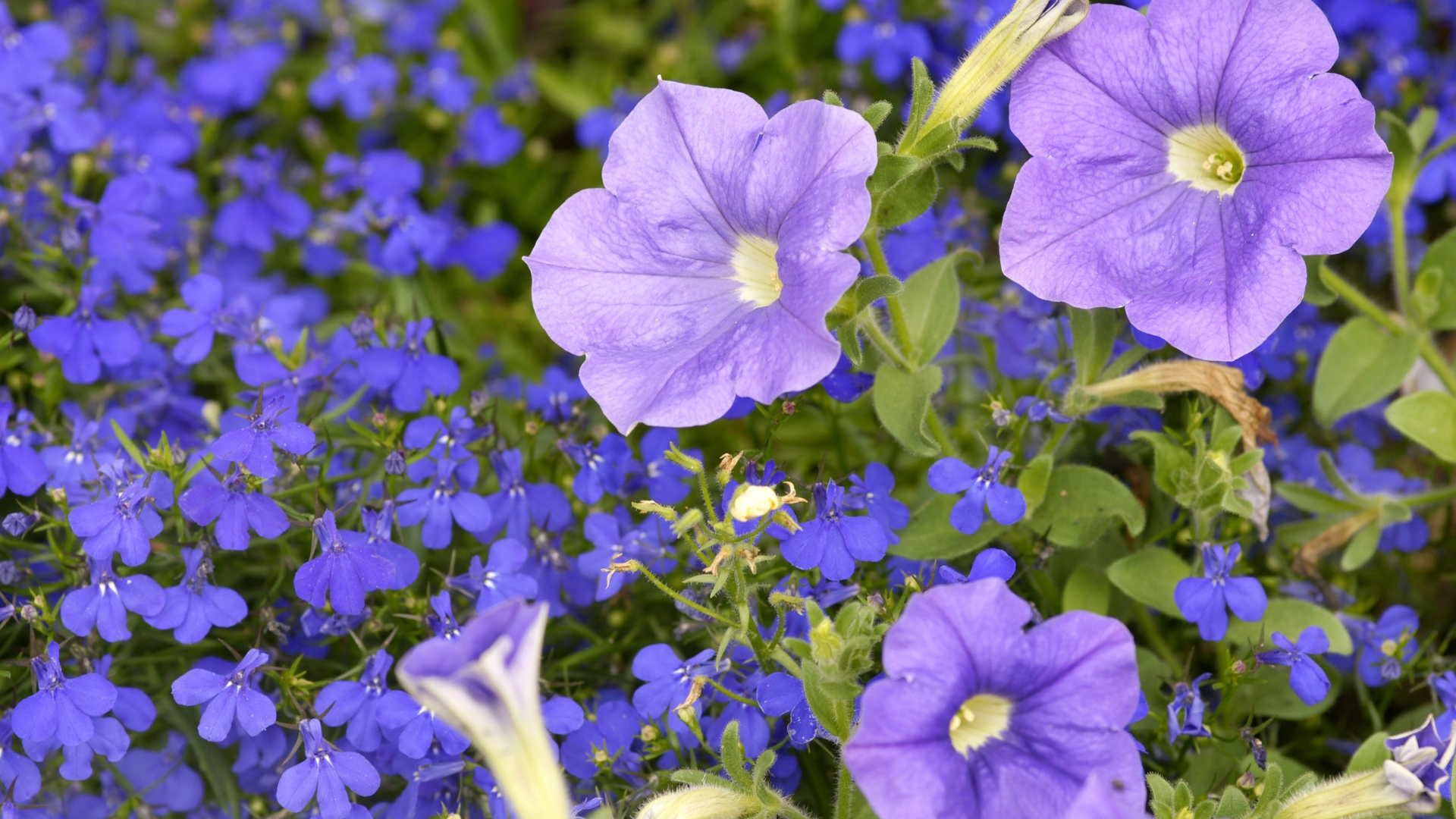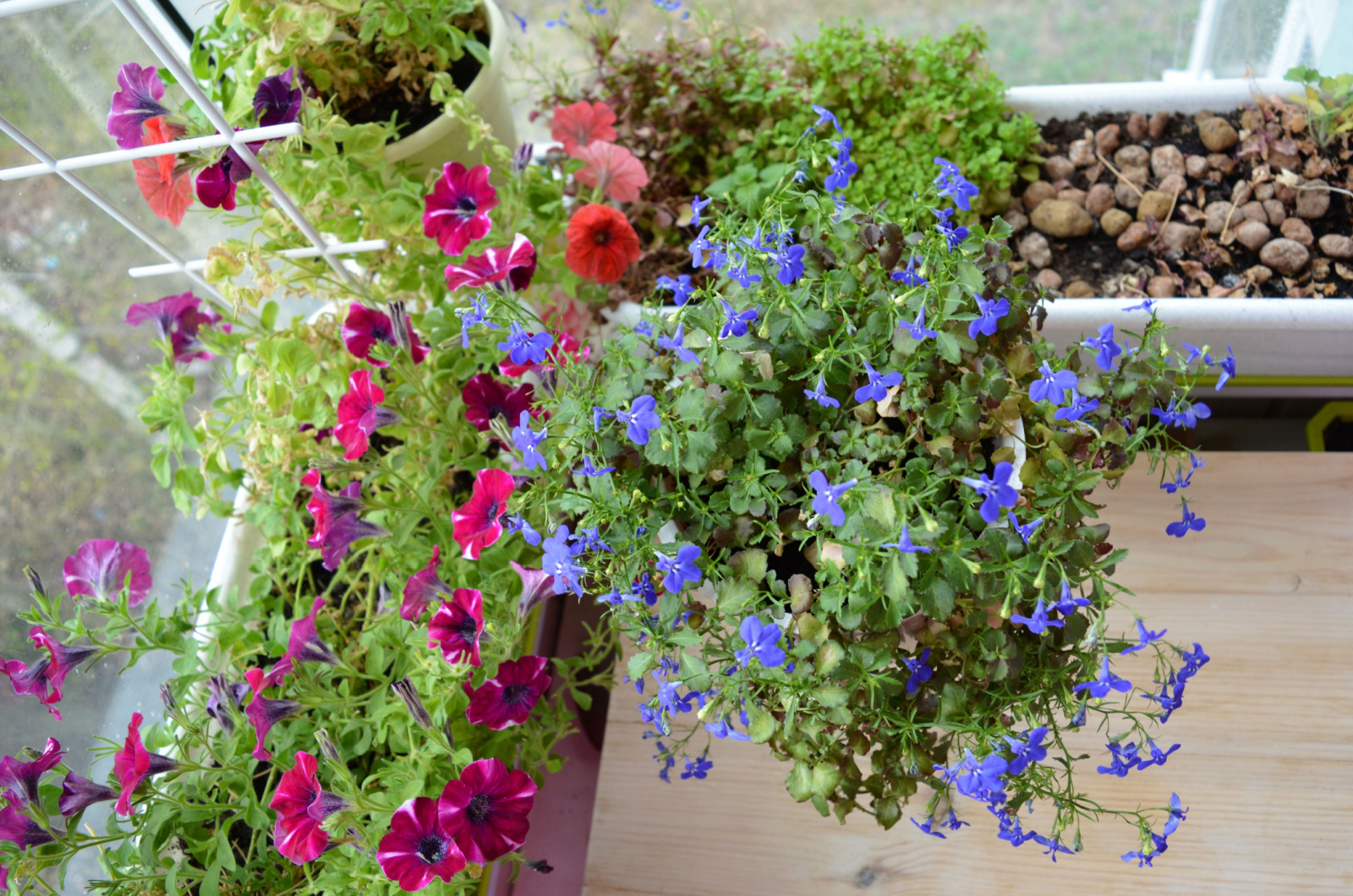Petunias are staple flowers of many gardens, and for a couple of good reasons – they are easy to grow, they produce colorful flowers, and can be grown in ornamental gardens and patio planters.
However, you can make your garden even more beautiful by combining petunias with this other plant – they mix beautifully together, forming a colorful and dreamy flower display!
Of course, we are talking about Lobelia erinus, petunias’ partner in crime.
Their different growth habits, with lobelia trailing and petunias forming clumps, create a lovely combination that stands out in your garden.
Join us as we share some tips on how to grow these two lovely flowers together. Let’s make your garden a colorful paradise by pairing petunias with lobelias!
Lobelias And Petunias Are A Match Made In Heaven
Growing similar plants together is great for low-maintenance gardening. All busy gardeners out there can have mesmerizing flower gardens by simply keeping like-minded flowers close together.
Both lobelias and petunias grow well in partial shade and sunlight (they’ll do better in full sun).
Water petunias and lobelias when the soil feels dry; both plants are drought-tolerant but you shouldn’t let the soil get too dry because lobelias can dry quicker than petunias do.
Spreading petunias will need more watering than clumping, so keep that in mind. These may suit the lobelias’ schedule better, but when picking the container size, consider the trailing habits of both plants.
Lobelias spread out only 6 inches while petunias typically spread out at least 1 foot.
To grow them both in a container, opt for a 12-inch diameter pot, allowing ample space for the petunias to spread, with the lobelias trailing down the sides.
This might be useful: 4 Gardening Mistakes That Might Be Harming Your Petunias
How To Grow Them Together
These plants are a match made in heaven because they both require very little maintenance. You can grow both lobelias and petunias in hanging baskets or hard-to-reach flower beds.
Since lobelias are self-pruning, you don’t have to worry about trimming them – they will drop their flowers as soon as they are done blooming. Some petunias, like Supertunia, are also self-pruning, so you can combine them together and forget about pruning altogether!
Deadheading spent flowers can encourage flower production and lead to more blooms, so I would suggest you do that.
Both plants are annuals, so you can leave some spent blooms behind and hope they’ll come back next year!
To keep them healthy and encourage flower production, you should give your flowering plants some fertilizer. Use a slow-release kind of fertilizer once or twice during the season or a liquid fertilizer when watering.
Remember to always follow the instructions displayed on the packaging so that you don’t end up overfertilizing your flowers!
Don’t worry, these plants aren’t picky about the soil quality or nutrients, so you won’t have to put that much effort into feeding them correctly.
This might be useful: 11 Eye-Catching Ideas For Landscaping With Petunias



